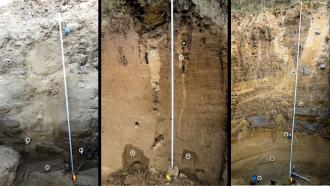
Scientists at Indian Institute of Science (IISc), Bengaluru have developed a new type of energy harvester that uses piezoelectric and electrodynamic mechanisms in a single device.
Energy harvesters are devices which converts ambient sources of energy like solar, wind, thermal or mechanical, into usable electricity. Unlike energy producers which consume fuel to produce energy, energy harvesters can only convert one type of energy into another usable form, usually electricity and often run on renewable energy sources.
Conventional energy harvesters employ a single type of energy harvester, which can convert one type of energy, like solar, into another like electricity. A more modern version is hybrid energy harvesters, which can harvest more than one type of energy, converting them into usable electricity. The team from IISc have built one such hybrid harvester, which combines piezoelectric and electrodynamic harvesters into one unit.
A piezoelectric device converts mechanical stress into electricity. Like the quartz crystals used in many watches, a small amount of electricity is produced when a small force is applied to the crystal. In most devices, like watches however, the inverse property of the piezoelectric devices is utilized, wherein a small current applied to the crystal induces movement in the crystal. An electrodynamic device on the other hand uses faraday’s principles to generate a small current. Here a rotating magnetic field induces current to start flowing in a wire. Today, many motors use this principle, where a small current applied to a loop of copper coil induces rotation of a magnet placed inside the coil. For an energy harvester however, the magnet is rotated, which in turn induces the electric current within the copper coil.
To build the hybrid energy harvester, the scientists used a lumped element model, where the behaviour of the elements of a circuit is represented in a simplistic way. Once this is done, the exact amount of electrical load on the circuit was determined to know how much energy can be harvested from such a circuit. Next the scientists designed the hybrid harvester. For optimal results and compact arrangement, two devices; one with a curved piezoelectric beam and another with a straight one was designed. The designed device yielded an output of 1.7 milli Watts for an input acceleration of 0. 5 gram Newton, with a conversion efficiency of 50%. Although the amount of electricity produces is miniscule, it can still be used to power small sensors and other low power devices, which are becoming increasing ubiquitous with the arrival of Internet of Things.






